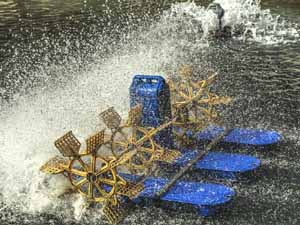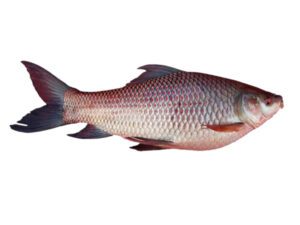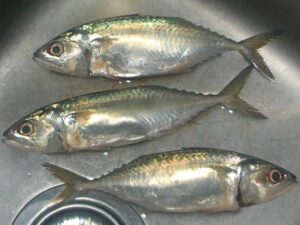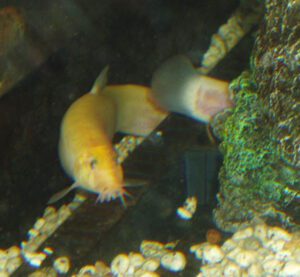Fish farming (also known as aquaculture) means ‘raising fish commercially in tanks, ponds or other enclosures for the purpose of producing food’.
Commercial fish farming has already established as a profitable business venture throughout the world. Fish is a great source of food and protein.
The demand and price of fish and fish related products are also increasing rapidly, in accordance with rapid population growth. This is the main reason of increasing this business around the world.
Almost all countries around the world are somehow suitable for fish farming business. But the countries with coastal areas are very suitable for this business.
There are many areas, where fish farming business is the only way of livings for the people. However, here we are describing more about the advantages of fish farming and the steps for starting this business commercially.
Health Benefits of Fish
Fish is very nutritious and it is among the healthiest foods on the planet. It is rich in nutrients such as protein, vitamins and minerals. It is also a great source of omega-3 fatty acids, which are incredibly important for your body and brain.
Here we are trying to describe more about the top advantages of consuming fish.
- Fish is high in many important nutrients. It is rich in high-quality protein, iodine, and various vitamins and minerals.
- Some fish also pack omega-3 fatty acids and vitamin D.
- Consuming fish regularly is safe for heart patients.
- Omega-3 fatty acids is essential for brain and eye development. And some fish is great source of omega-3 fatty acids.
- Regular consumption of fish is very important for controlling memory and emotion. People who eat fish on a regular basis have more grey matter in their brain centers that control memory and emotion.
- Omega-3 fatty acids in fish may also combat depression.
- Consuming regularly is also beneficial for reducing the risk of type 1 diabetes and several other autoimmune conditions.
- Some studies show that children who eat more fish have a lower risk of asthma.
- People who eat more fish have a much lower risk of AMD, a leading cause of vision impairment and blindness.
- Currently, sleep disorders have become incredibly common throughout the world. Some evidence indicates that eating fatty fish (such as salmon) may improve sleep.[1]
- Fish is no doubt delicious and very easy to prepare. You can prepare fish in a number of ways, including baked and fried.
Advantages of Fish Farming Business
There are many advantages of starting commercial fish farming business. Here we are describing the main advantages of fish farming business.
- According to the demand, commercial fish farming business allows for large supplies of fish. Catching fish from the wild can’t always fulfill the consumer’s demand. In such cases commercial fish farming can meet up this demand.
- Fish can be raised in tanks until they are ready for marketing, and they don’t require the extensive capture of wild fish. Thus commercial fish farming helps to preserve natural ecosystems.
- Compared to the wild brethren, some farm raised fish species are more nutritious. Fish are usually fed a wide variety of protein and nutrient enriched foods or pellets on commercial fish farms. So farm fish become more healthier than the wild fish.
- Various types of fish species are available throughout the world. So you can choose your desired species for your fish farming business.
- Fish are very popular as food around the world. So there is an established fish market, and you don’t have to worry about marketing your products.
- You can start fish farming business in both large or small scale production purpose.
- If you don’t have enough capital for starting this business, then you can apply for bank loans. Many banks will allow loans for starting this business commercially.
- Fish farming business is a great source of employment. More than 1 billion people around the world depend on fish as their primary protein source. And most of this people are directly or indirectly involved with fish products or fish farming business. As a result, fish farming creates a great income and employment source for the people. Global fish exportation business is now earning more money every year, than any other food commodity.
- Even you can meet up your daily family nutritional demands through small scale fish farming in tanks or ponds.
How to Start Fish Farming Business?
For maintaining a profitable fish farming business, you have to go through some step by step process. The steps for starting a fish rearing business includes selecting suitable farm land or area, fish farm type (cage, tank or pond), cage or pond construction, selecting fish species, feeding, care & management, harvesting and marketing.
We are shortly describing all the steps below. For running a successful fish farming business, follow every steps very carefully.

Step 1. Complete A Fish Farming Training
First of all, learn more about fish farming business practically. Visit as many farms as you can within your local area to gather practical knowledge. You can also complete a fish farming training before starting this business commercially.
Step 2. Make An Effective Business Plan
Making a good fish farming business plan is very important. So, make a very good and effective business plan before starting your operation. Try to include everything in your business plan from stocking to marketing. You can ask for help to make an effective business plan if you are a beginner.

Step 3. Select A Suitable Farm Land/Area
Selecting a suitable land or area is very important for starting commercial fish rearing business. All the areas are not suitable for profitable business. And some areas have plenty of natural resources, which are very effective for fish farming business.
Especially coastal areas and the areas near big rivers or stream are very suitable for establishing fish farming business. Consider the followings while selecting land or areas for your business.
- Select relatively level land and avoid steeply sloped lands.
- Consider your future business plan, while selecting the land. It will be better if you can select a large piece of land, where you can perform all types of necessary farm activities.
- Avoid flooding and polluted areas, because flooding area can harm your business seriously.
- Don’t select fish farming land near the crop fields. Farmers usually use a lots of fertilizers and pesticides in their field for better production. These chemicals get mixed with water and the polluted water can affect your fish farm.
- It will be better,if your selected land become slightly lower than the main water source. It also help to reduce the cost of filling your farm land with water. Natural gravity will fill the land without any cost.
- Ensure good transportation system is available in your selected area. Good transportation system will be very effective for marketing your products and purchasing necessary commodities from the market.
Step 4. Determine The Type of Your Farm
There are numerous specific type of fish farms in both intensive and extensive fish farming system. You can start fish farming business by choosing any type.
You can choose cage system, tank system or pond system. In cage system, make a suitable cage and place it in lakes, ponds, bayous or oceans and start feeding the fish until they reach marketing age.
In case of raising fish in tanks, make a or a few tanks and stock fish there. Here we are describing more about fish rearing in pond system.
Step 5. Pond Design And Construction
Construct a suitable pond, after selecting your farm location. Before constructing, make a good design and make the pond according to your desired design.
While designing the pond, ensure the availability of all types of necessary facilities for maintaining a profitable fish farming business. Although the design of a pond depends on the fish species you intend to raise and your location.
You can consult with your nearest fisheries institute to learn more about specific pond design for specific fish species. Always try to maintain a good environment in the pond. Good environment helps to live and grow the fish well, and it directly involved with better production and maximum profits. See pond management.
Step 6. Select Suitable Fish Species
Selecting suitable fish species is very important for maximizing profits form fish farming business. Select those breeds, which have a huge demand and high price in your local market.
The most important fish species used in fish farming throughout the world are carp, salmon, tilapia and catfish.

All of these fish species have many varieties and suitable for farming in all types of agro-climatic conditions. Select the fish species for farming, depending on your local facilities, demand and price.
Step 7. Provide Adequate Nutritious Feeding
Feeding is the most important part of commercial fish farming business. Always try to provide your fish high quality and nutritious food. High quality food not only ensures maximum production but also help to keep the fish healthy. So provide your fish supplementary fish feed along with natural food.
There are various types of prepared commercial fish feed available in the market for specific fish species. You can purchase those commercial feed from the market or prepare it by your own.
Learn more about preparing supplementary fish feed, if you want to prepare it by your own. Don’t forget to add all types of necessary nutrient elements, such as vitamins, minerals, salt etc. Feed your fish several times a day, depending on the fish species.
Step 8. Breeding
Fish breeding is the practice of controlling the reproduction of fish for commercial or recreational purposes. It is a critical component of the aquaculture industry.
Most of the fish species are naturally very good breeders. But some species require artificial environment for breeding. If you want to avoid breeding, then you have to purchase fingerlings from the hatcheries.
Step 9. Ensure Good Care And Management
Always try to provide your fish fresh and nutritious foods. It will be better, if you can change water from the pond occasionally. If not possible, then you can use some chemicals according to the suggestion of an expert.
Monitor the health of your fish on a regular basis. Do all your necessary farm tasks timely. Keep the pond environment clean and suitable for proper growth.
Test the water and soil quality of your pond on a regular basis. Always stock some necessary drugs on your farm. Prevent all types of predators, including frogs, snakes etc.
Step 10. Harvesting
After a certain period, the fish become suitable for harvesting. Although this time depends on the fish species. Start harvesting, when a major numbers of fish reach marketing age.
You can use net for harvesting fish or by removing water from the pond. Try to harvest during morning or afternoon, when temperature is low. After harvesting, send the fish to the market as soon as possible.
Step 11. Marketing
Marketing is the easiest step of fish farm business. There are numerous markets available where you can sell your products. And all types of fish have a huge demand in the market.
After harvesting, you can easily sell the fish at any of your nearest local market. Even there are many companies available who export fish to the foreign countries. So don’t worry about marketing the products, just focus on the other steps.
Commercial fish farming business is really very profitable and a good source of earning livings. If you intend to join this venture, then visit some fish farms in your area and try to have some practical knowledge. God bless you!







Very interesting.hope to start this year.
May God bless you!
This is valuable information. Can you provide more reference material on making own fish feed.
please assist with more information
[email protected]
Educating introduction to fish farming, thumbs up
Thanks for your guide lines. I’m newly in the business, I stocked just 2 wks ago. Please, I’d like to learn how to make own fish feed
I am in Durban and have intention to start fish farming (pond) using my swimming pool at home. Who can guide me on this one? Thanks. Email [email protected]
Hi how are you I have a place I need someone to hire it and raise fishes
Please keep your contact details here so that interested people can contact you. Good luck!
I have learned alot from your site and thank you
Good day
Have no experience whatsoever and would like to start as small as subsistence farming would permit so I can grow organically into a more commercial entity. Any assistance or pointed pointers would be appreciated.
Hi sir, i have made a 7000 square feet mud pond in our house back. I don’t know if it is small for fish farming. Can i stock some tilapia fish in it. is this pond good for raising tilapia. how many fish can this pond tilapia?
Yes, sure! You can definitely stock tilapia fish your pond. Your pond is enough for stocking around or up to 5000 tilapia fish if you provide them supplementary fish feeds. The number will be far less if you provide them with no food. Good luck!